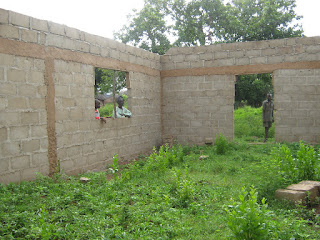The Dagomba are a large people group living in northern Ghana. Their kingdom, called Dagbon, was established centuries ago and dominated an area near the Dagomba capital of Yendi.
They speak Dagbani, which is a Gur language.
The Dagomba make their living primarily through farming. Much of the land of the Dagbon is infertile and requires that a farm be left fallow for up to five years; therefore, Dagomba villages are somewhat small, leaving room for farms to be widely separated. Farmers use much fertilizer from the manure of the village cattle, and eventually the soil does become quite fertile, enabling the farms to be used year-round. However, farms located in the bush are used only for two or three years and then are left fallow. Since yams are the specialty crop, the Dagomba plant over 32 varieties. Farmers also grow crops such as maize, millet, rice, peanuts, and beans.
The Dagomba are not only skillful farmers, but also are fishermen and hunters, and some even engage in administrative and managerial work. Dagomba craftsmen are skilled tailors, traders, and makers of ropes and mats. Some also specialize as blacksmiths, butchers, and barbers. Parents send their young sons to be trained by these craftsmen. Through observation and practice, a boy will gradually learn a trade and assume his role in the new occupation.
In Dagomba society, villagers arrange their houses in a particular order. The chief (eldest man in the village) locates his dome-shaped hut in the center. His hut stands out above the rest. The village is divided into wards or quarters, all facing the chief's home. A quarter is identified by its head or by its dominating specialist group. For example, there may be a soldiers' quarter or a butchers' quarter. The commoners are scattered throughout the village in round or rectangular huts (for female and male, respectively); there is no physical separation of the commoners from the ruling class.
Drummers play an important role in the village, for they not only are musicians, but also are court historians. They must learn and retain much information. In most cases, a drummer's son follows in his father's footsteps, becoming a drummer and learning from his father the origin of the people and their kingdom.
What are their beliefs? Although almost half of the Dagomba follow the Islamic faith, many also believe in and worship additional spirits and gods. Each village sacrifices to its individual ancestral gods and the entire society collectively worships the more powerful gods. The Dagomba also practice witchcraft and consult diviners to rid themselves of curses. The Dagomba honor their ancestors with a pagan festival called Bugun, which means "fire" or "hell." The celebration begins with a great feast and culminates when the people gather together with lighted torches near a tree outside the community. There they recite the names of their ancestors and throw their torches into the tree.
Information obtained from
The Joshua Project.





